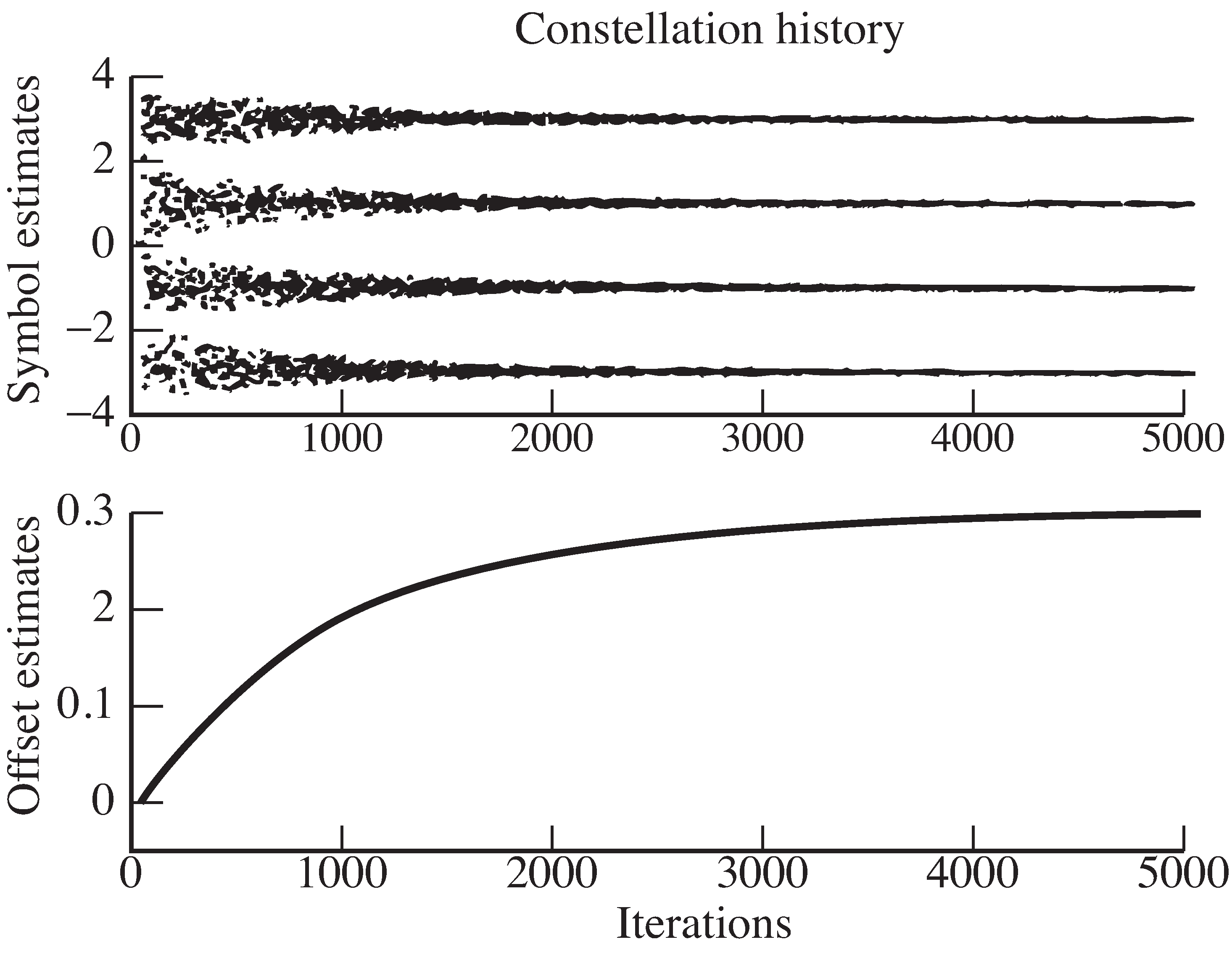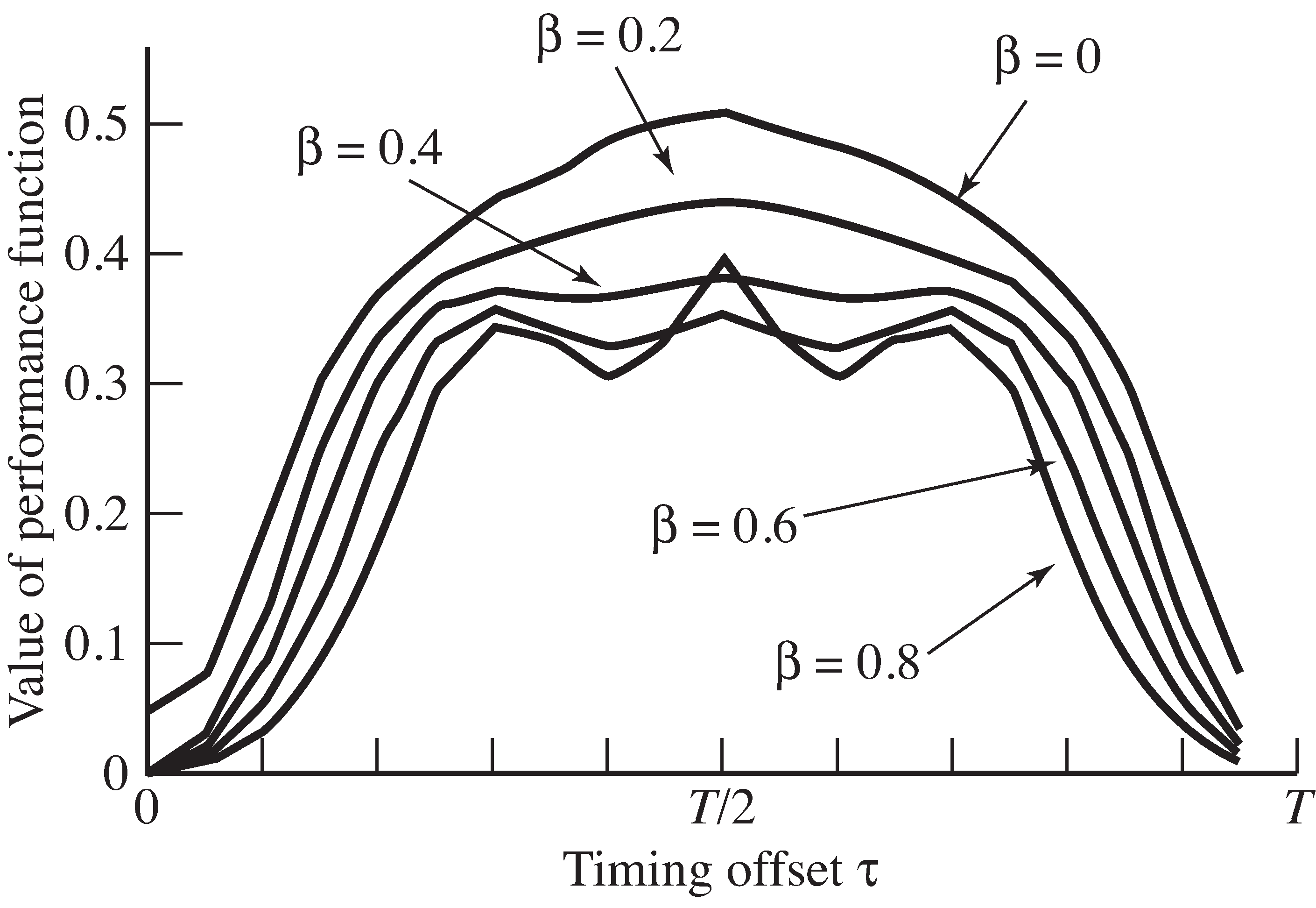| << Chapter < Page | Chapter >> Page > |

The output of
clockrecDDcost.m is shown in
[link] . The error surface is plotted
for the SRRC with five different rolloff factors.For all
,
the correct answer at
is a minimum. For small
values of
, this is the only minimum and the error
surface is unimodal over each period. In these cases, no matter where
is initialized, it should converge to the correct answer.
As
is increased, however, the error surface flattens
across its top and gains two extra minima.These represent erroneous values of
to which the adaptive element may converge.
Thus, the error surface can warn the system designer toexpect certain kinds of failure modes in certain situations
(such as certain pulse shapes).

Use
clockrecDD.m to “play with” the clock
recovery algorithm.
mu affect the
convergence rate? What range of stepsizesworks?tau ?
(Try 2-PAM and 6-PAM. Remember to quantize properlyin the algorithm update.)Implement a rectangular pulse shape. Does this work better or worse than the SRRC?
Add noise to the signal (add a zero mean noise
to the received signal using theM
atlab
randn function).
How does this affect the convergence of the timing offset parameter
tau . Does it change the final converged value?
Modify
clockrecDD.m by setting
toffset=-0.8 . This starts the iteration in a closed eye
situation. How many iterations does it take to open the eye?What is the convergent value?
Modify
clockrecDD.m by changing the channel.
How does this affect the convergence speed of thealgorithm? Do different channels change the convergent value?
Can you think of a way to predict (given a channel)what the convergent value will be?
Modify the algorithm
[link] so that it minimizes
the source recovery error
, where
is some (integer) delay. You will need to assume that
the message
is known at the receiver.
Implement the algorithm by modifying the code in
clockrecDDcost.m . Compare the new algorithm
with the old in terms of convergence speedand final convergent value.
Using the source recovery error algorithm of
[link] , examine the
effect of different pulse shapes. Draw the error surfaces(mimic the code in
clockrecDDcost.m ).
What happens when you have the wrong
?
The right
?
Investigate how the error surface depends on the input signal.
Any timing recovery algorithm must choose the instants at which to sample the received signal. The previous sectionshowed that this can be translated into the mathematical problem of finding a single parameter, the timing offset , which minimizes the cluster variance.The extended example of "An Example" suggests that maximizing the average of the received power (i.e., maximizing ) leads to the same solutions as minimizing the cluster variance.Accordingly, this section builds an element that adapts so as to find the sampling instants at which the power (in the sampled version of the received signal)is maximized.

Notification Switch
Would you like to follow the 'Software receiver design' conversation and receive update notifications?